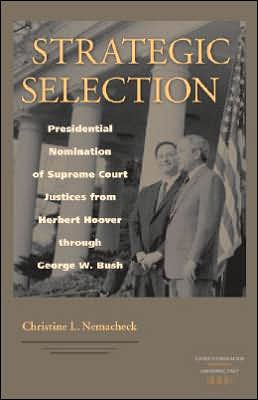The process by which presidents decide whom to nominate to fill Supreme Court vacancies is obviously of far-ranging importance, particularly because the vast majority of nominees are eventually confirmed. But why is one individual selected from among a pool of presumably qualified candidates? In
Strategic Selection: Presidential Nomination of Supreme Court Justices from Herbert Hoover through George W. Bush, Christine Nemacheck makes heavy use of presidential papers to reconstruct the politics of nominee selection from Herbert Hoover’s appointment of Charles Evan Hughes in 1930 through President George W. Bush’s nomination of Samuel Alito in 2005. Bringing to light firsthand evidence of selection politics and of the influence of political actors, such as members of Congress and presidential advisors, from the initial stages of formulating a short list through the president’s final selection of a nominee, Nemacheck constructs a theoretical framework that allows her to assess the factors impacting a president’s selection process.
Much work on Supreme Court nominations focuses on struggles over confirmation, or is heavily based on anecdotal material and posits the "idiosyncratic" nature of the selection process; in contrast, Strategic Selection points to systematic patterns in judicial selection. Nemacheck argues that although presidents try to maximize their ideological preferences and minimize uncertainty about nominees’ conduct once they are confirmed, institutional factors that change over time, such as divided government and the institutionalism of the presidency, shape and constrain their choices. By revealing the pattern of strategic action, which she argues is visible from the earliest stages of the selection process, Nemacheck takes us a long way toward understanding this critically important part of our political system.



